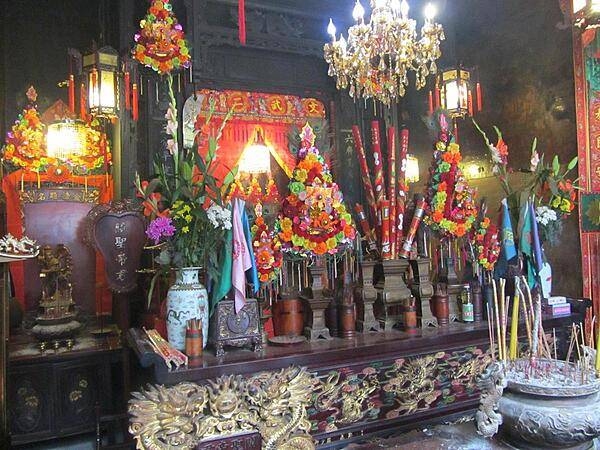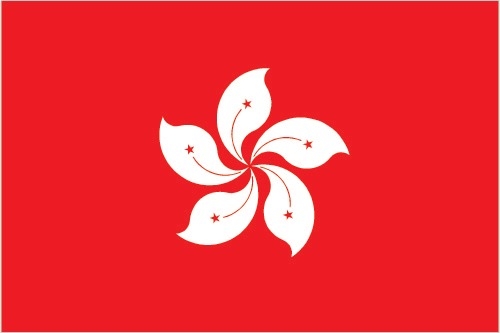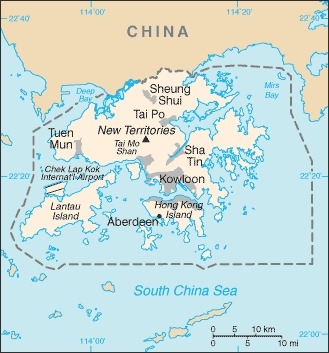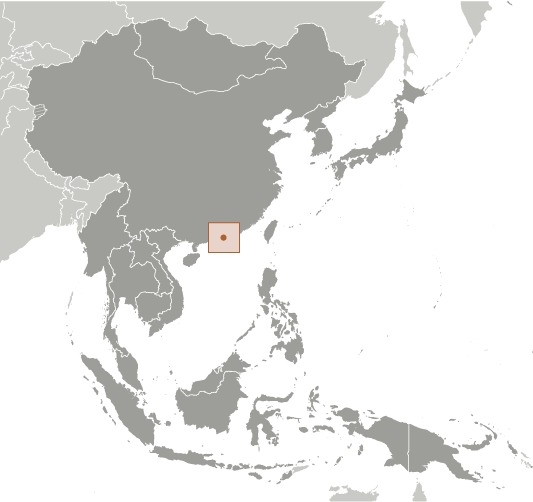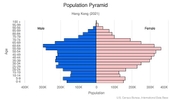Introduction
Background
Seized by the UK in 1841, Hong Kong was formally ceded by China the following year at the end of the First Opium War; the Kowloon Peninsula was added in 1860 at the end of the Second Opium War, and was further extended when Britain obtained a 99-year lease of the New Territories in 1898. Pursuant to an agreement signed by China and the UK on 19 December 1984, Hong Kong became the Hong Kong Special Administrative Region of the People's Republic of China on 1 July 1997. In this agreement, China promised that, under its "one country, two systems" formula, China's socialist economic and strict political system would not be imposed on Hong Kong and that Hong Kong would enjoy a "high degree of autonomy" in all matters except foreign and defense affairs for the subsequent 50 years. Since the turnover, Hong Kong has continued to enjoy success as an international financial center. However, dissatisfaction with the Hong Kong Government and growing Chinese political influence has been a central issue and led to considerable civil unrest. In June 2020, the Chinese Government passed a security law for Hong Kong that would criminalize acts such as those interpreted as secession, subversion, terrorism, and collusion with foreign or external forces. Critics said the law effectively curtailed protests and freedom of speech and was widely viewed as reducing Hong Kong’s autonomy, while Beijing said it would return stability. The law was met with widespread international condemnation and criticism that it effectively ended the "one country, two systems" guiding principle of Hong Kong’s Basic Law. Since its passing, authorities have used the law to detain pro-democracy activists and politicians, oust opposition lawmakers, and raid media offices. In March 2021, Beijing reduced the number of directly elected seats in Hong Kong’s legislature, furthering its efforts to curtail political opposition and protests.
Visit the Definitions and Notes page to view a description of each topic.
Geography
Location
Eastern Asia, bordering the South China Sea and China
Geographic coordinates
22 15 N, 114 10 E
Map references
Southeast Asia
Area - comparative
six times the size of Washington, DC
Land boundaries
total: 33 km
regional borders (1): China 33 km
Coastline
733 km
Maritime claims
territorial sea: 12 nm
Climate
subtropical monsoon; cool and humid in winter, hot and rainy from spring through summer, warm and sunny in fall
Terrain
hilly to mountainous with steep slopes; lowlands in north
Elevation
highest point: Tai Mo Shan 958 m
lowest point: South China Sea 0 m
Natural resources
outstanding deepwater harbor, feldspar
Land use
agricultural land: 5% (2018 est.)
arable land: 3.2% (2018 est.)
permanent crops: 0.9% (2018 est.)
permanent pasture: 0.9% (2018 est.)
forest: 0% (2018 est.)
other: 95% (2018 est.)
Irrigated land
10 sq km (2012)
Population distribution
population fairly evenly distributed
Natural hazards
occasional typhoons
Geography - note
consists of a mainland area (the New Territories) and more than 200 islands
People and Society
Nationality
noun: Chinese/Hong Konger
adjective: Chinese/Hong Kong
Ethnic groups
Chinese 92%, Filipino 2.5%, Indonesian 2.1%, other 3.4% (2016 est.)
Languages
Cantonese (official) 88.9%, English (official) 4.3%, Mandarin (official) 1.9%, other Chinese dialects 3.1%, other 1.9% (2016 est.)
major-language sample(s):
世界概况, 必須擁有的基本資料参考书 (Cantonese)
The World Factbook, the indispensable source for basic information.Cantonese audio sample:
Religions
Buddhist or Taoist 27.9%, Protestant 6.7%, Roman Catholic 5.3%, Muslim 4.2%, Hindu 1.4%, Sikh 0.2%, other or none 54.3% (2016 est.)
note: many people practice Confucianism, regardless of their religion or not having a religious affiliation
Age structure
0-14 years: 12.81% (male 490,477/female 437,971)
15-24 years: 8.81% (male 334,836/female 303,897)
25-54 years: 42.66% (male 1,328,529/female 1,763,970)
55-64 years: 17.24% (male 582,047/female 668,051)
65 years and over: 18.48% (male 625,453/female 714,676) (2020 est.)
Dependency ratios
total dependency ratio: 44.7
youth dependency ratio: 18.3
elderly dependency ratio: 26.3
potential support ratio: 3.8 (2020 est.)
Median age
total: 45.6 years
male: 44.2 years
female: 46.5 years (2020 est.)
Population distribution
population fairly evenly distributed
Urbanization
urban population: 100% of total population (2021)
rate of urbanization: 0.58% annual rate of change (2020-25 est.)
Major urban areas - population
7.598 million Hong Kong (2021)
Sex ratio
at birth: 1.06 male(s)/female
0-14 years: 1.12 male(s)/female
15-24 years: 1.1 male(s)/female
25-54 years: 0.75 male(s)/female
55-64 years: 0.87 male(s)/female
65 years and over: 0.88 male(s)/female
total population: 0.86 male(s)/female (2020 est.)
Mother's mean age at first birth
29.8 years (2008 est.)
Infant mortality rate
total: 2.59 deaths/1,000 live births
male: 2.86 deaths/1,000 live births
female: 2.3 deaths/1,000 live births (2021 est.)
Life expectancy at birth
total population: 83.41 years
male: 80.71 years
female: 86.28 years (2021 est.)
Contraceptive prevalence rate
66.7% (2017)
Drinking water source
improved: urban: 100% of population
total: 100% of population
unimproved: urban: -1% of population
total: 0% of population (2017 est.)
Physicians density
2 physicians/1,000 population (2019)
Hospital bed density
4.9 beds/1,000 population (2020)
Sanitation facility access
improved: urban: 96.4% of population
total: 96.4% of population
unimproved: urban: 3.6% of population
total: 3.6% of population (2017)
School life expectancy (primary to tertiary education)
total: 17 years
male: 17 years
female: 18 years (2020)
Unemployment, youth ages 15-24
total: 15.5%
male: 17.3%
female: 13.6% (2020 est.)
Environment
Environment - current issues
air and water pollution from rapid urbanization; urban waste pollution; industrial pollution
Air pollutants
carbon dioxide emissions: 43.64 megatons (2016 est.)
Climate
subtropical monsoon; cool and humid in winter, hot and rainy from spring through summer, warm and sunny in fall
Land use
agricultural land: 5% (2018 est.)
arable land: 3.2% (2018 est.)
permanent crops: 0.9% (2018 est.)
permanent pasture: 0.9% (2018 est.)
forest: 0% (2018 est.)
other: 95% (2018 est.)
Urbanization
urban population: 100% of total population (2021)
rate of urbanization: 0.58% annual rate of change (2020-25 est.)
Revenue from forest resources
forest revenues: 0% of GDP (2018 est.)
country comparison to the world: 172Waste and recycling
municipal solid waste generated annually: 5,679,816 tons (2015 est.)
municipal solid waste recycled annually: 1,931,138 tons (2016 est.)
percent of municipal solid waste recycled: 34% (2016 est.)
Government
Country name
conventional long form: Hong Kong Special Administrative Region
conventional short form: Hong Kong
local long form: Heung Kong Takpit Hangching Ku (Eitel/Dyer-Ball)
local short form: Heung Kong (Eitel/Dyer-Ball)
abbreviation: HK
etymology: probably an imprecise phonetic rendering of the Cantonese name meaning "fragrant harbor"
Government type
presidential limited democracy; a special administrative region of the People's Republic of China
Dependency status
special administrative region of the People's Republic of China
Administrative divisions
none (special administrative region of the People's Republic of China)
Independence
none (special administrative region of China)
National holiday
National Day (Anniversary of the Founding of the People's Republic of China), 1 October (1949); note - 1 July (1997) is celebrated as Hong Kong Special Administrative Region Establishment Day
Constitution
history: several previous (governance documents while under British authority); latest drafted April 1988 to February 1989, approved March 1990, effective 1 July 1997 (Basic Law of the Hong Kong Special Administrative Region of the People's Republic of China serves as the constitution); note - since 1990, China's National People's Congress has interpreted specific articles of the Basic Law
amendments: proposed by the Standing Committee of the National People’s Congress (NPC), the People’s Republic of China State Council, or the Special Administrative Region of Hong Kong; submittal of proposals to the NPC requires two-thirds majority vote by the Legislative Council of Hong Kong, approval by two thirds of Hong Kong’s deputies to the NPC, and approval by the Hong Kong chief executive; final passage requires approval by the NPC
Legal system
mixed legal system of common law based on the English model and Chinese customary law (in matters of family and land tenure)
Citizenship
see China
Suffrage
18 years of age in direct elections for half of the Legislative Council seats and all of the seats in 18 district councils; universal for permanent residents living in the territory of Hong Kong for the past 7 years; note - in indirect elections, suffrage is limited to about 220,000 members of functional constituencies for the other half of the legislature and a 1,200-member election committee for the chief executive drawn from broad sectoral groupings, central government bodies, municipal organizations, and elected Hong Kong officials
Executive branch
chief of state: President of China XI Jinping (since 14 March 2013)
head of government: Chief Executive Carrie LAM (since 1 July 2017)
cabinet: Executive Council or ExCo appointed by the chief executive
elections/appointments: president indirectly elected by National People's Congress for a 5-year term (eligible for a second term); election last held on 17 March 2018 (next to be held in March 2023); chief executive indirectly elected by the Election Committee and appointed by the PRC Government for a 5-year term (eligible for a second term); election last held on 26 March 2017 (next to be held in 2022)
election results: Carrie LAM elected chief executive; Election Committee vote - Carrie LAM 777, John TSANG 365, WOO Kwok-hing 21, invalid 23
note: the Legislative Council voted in June 2010 to expand the Election Committee to 1,200 members
Legislative branch
description: unicameral Legislative Council or LegCo (70 seats; 35 members directly elected in multi-seat constituencies by party-list proportional representation vote; 30 members indirectly elected by the approximately 220,000 members of various functional constituencies based on a variety of methods; 5 at large "super-seat" members directly elected by all of Hong Kong’s eligible voters who do not participate in a functional constituency; members serve 4-year terms)
elections: last held on 4 September 2016; (scheduled for September 2020, but delayed until 19 December 2021); note - byelection held on 11 March and 25 November 2018 to fill 5 seats left vacant after 5 legislators were removed from office
election results: percent of vote by block - pro-democracy 36%; pro-Beijing 40.2%, localist 19%, other 4.8%; seats by block/party - pro-Beijing 40 (DAB 12, BPA 7, FTU 5, Liberal Party 4, NPP 3, other 9); pro-democracy 23 (Democratic Party 7, Civic Party 6, PP-LSD 2, Professional Commons 2, Labor 1, NWSC 1, PTU 1, other democrats 3), localists 6 (ALLinHK 2, CP-PPI-HKRO 1, Demosisto 1, Democracy Groundwork 1, other localist 1), non-aligned independent 1; composition - men 59, women 11, percent of women 15.7%; note - 2 localists were barred from taking office in November 2016 and 4 pro-democracy legislators were removed in July 2017; two pan-democratic, two DAB, and one pro-establishment candidates won the byelections in 2018 to fill the seats vacated by the 5 legislators removed from office; one pro-democracy seat remains unfilled pending a court appeal; percent of vote by block as of March 2019 - pro-Beijing 62% pro-democracy 38%; seats by block/party as of March 2019 - pro-Beijing 43 (DAB 13, BPA 7, FTU 5, Liberal Party 4, NPP 3, other 11); pro-democracy 26 (Democratic Party 7, Civic Party 5, Professional Commons 2, Civic Passion 1, Labor 1 PTU 1, Council Front 6, independent 3); composition as of March 2019 - men 58, women 11; percent of women 15.7%
Judicial branch
highest courts: Court of Final Appeal (consists of the chief justice, 3 permanent judges, and 20 non-permanent judges); note - a sitting bench consists of the chief justice, 3 permanent judges, and 1 non-permanent judge
judge selection and term of office: all judges appointed by the Hong Kong Chief Executive upon the recommendation of the Judicial Officers Recommendation Commission, an independent body consisting of the Secretary for Justice, other judges, and judicial and legal professionals; permanent judges serve until normal retirement at age 65, but term can be extended; non-permanent judges appointed for renewable 3-year terms without age limit
subordinate courts: High Court (consists of the Court of Appeal and Court of First Instance); District Courts (includes Family and Land Courts); magistrates' courts; specialized tribunals
Political parties and leaders
parties:
ALLinHK (alliance of 6 localist groups)
Business and Professional Alliance or BPA [LO Wai-kwok]
Civic Party [Alan LEONG]
Civic Passion or CP [CHENG Chung-tai] (part of Civic Passion-Proletariat Political Institute-Hong Kong Resurgence Order alliance or CP-PPI-HKRO that dissolved after the 2016 election)
Democracy Groundwork [LAU Siu-lai]
Democratic Alliance for the Betterment and Progress of Hong Kong or DAB [Starry LEE Wai-king]
Democratic Party [LO Kin-hei]
Demosisto [Ivan LAM] (announced cessation of all operations, 30 June 2020)
Federation of Trade Unions or FTU [Stanley NG Chau-pei]
Labor Party [Steven KWOK Wing-kin]
League of Social Democrats or LSD [Raphael WONG Ho-ming]
Liberal Party [Felix CHUNG Kwok-pan]
Neighborhood and Workers Service Center or NWSC [LEUNG Yui-chung]
New People's Party or NPP [Regina IP Lau Su-yee]
People Power or PP [TAM Tak-chi]
Youngspiration [Sixtus "Baggio" LEUNG Chung-hang]
other:
Professional Commons [Charles Peter MOK] (think tank)
Professional Teachers Union or PTU
note: political blocks include: pro-democracy - Civic Party, Democratic Party, Labor Party, LSD, NWSC, PP, Professional Commons, PTU; pro-Beijing - DAB, FTU, Liberal Party, NPP, BPA; localist - ALLinHK, CP, Democracy Groundwork, Demosisto; there is no political party ordinance, so there are no registered political parties; politically active groups register as societies or companies
International organization participation
ADB, APEC, BIS, FATF, ICC (national committees), IHO, IMF, IMO (associate), Interpol (subbureau), IOC, ISO (correspondent), ITUC (NGOs), UNWTO (associate), UPU, WCO, WMO, WTO
Diplomatic representation in the US
chief of mission: none (Special Administrative Region of China); Hong Kong Economic and Trade Office (HKETO) carries out normal liaison activities and communication with the US Government and other US entities; Eddie MAK, JP (since 3 July 2018) is the Hong Kong Commissioner to the US Government of the Hong Kong Special Administrative Region; address: 1520 18th Street NW, Washington, DC 20036; telephone: [1] 202 331-8947; FAX: [1] 202 331-8958; hketo@hketowashington.gov.hk
HKETO offices: New York, San Francisco
Diplomatic representation from the US
chief of mission: Consul General Hanscom SMITH (since July 2019); note - also accredited to Macau
embassy: 26 Garden Road, Central, Hong Kong
mailing address: 8000 Hong Kong Place, Washington DC 20521-8000
telephone: [852] 2523-9011
FAX: [852] 2845-1598
email address and website:
acshk@state.gov
https://hk.usconsulate.gov/
Flag description
red with a stylized, white, five-petal Bauhinia flower in the center; each petal contains a small, red, five-pointed star in its middle; the red color is the same as that on the Chinese flag and represents the motherland; the fragrant Bauhinia - developed in Hong Kong the late 19th century - has come to symbolize the region; the five stars echo those on the flag of China
National symbol(s)
orchid tree flower; national colors: red, white
National anthem
note: as a Special Administrative Region of China, "Yiyongjun Jinxingqu" is the official anthem (see China)
Economy
Economic overview
Hong Kong has a free market economy, highly dependent on international trade and finance - the value of goods and services trade, including the sizable share of reexports, is about four times GDP. Hong Kong has no tariffs on imported goods, and it levies excise duties on only four commodities, whether imported or produced locally: hard alcohol, tobacco, oil, and methyl alcohol. There are no quotas or dumping laws. Hong Kong continues to link its currency closely to the US dollar, maintaining an arrangement established in 1983.
Excess liquidity, low interest rates and a tight housing supply have caused Hong Kong property prices to rise rapidly. The lower and middle-income segments of the population increasingly find housing unaffordable.
Hong Kong's open economy has left it exposed to the global economic situation. Its continued reliance on foreign trade and investment makes it vulnerable to renewed global financial market volatility or a slowdown in the global economy.
Mainland China has long been Hong Kong's largest trading partner, accounting for about half of Hong Kong's total trade by value. Hong Kong's natural resources are limited, and food and raw materials must be imported. As a result of China's easing of travel restrictions, the number of mainland tourists to the territory surged from 4.5 million in 2001 to 47.3 million in 2014, outnumbering visitors from all other countries combined. After peaking in 2014, overall tourist arrivals dropped 2.5% in 2015 and 4.5% in 2016. The tourism sector rebounded in 2017, with visitor arrivals rising 3.2% to 58.47 million. Travelers from Mainland China totaled 44.45 million, accounting for 76% of the total.
The Hong Kong Government is promoting the Special Administrative Region (SAR) as the preferred business hub for renminbi (RMB) internationalization. Hong Kong residents are allowed to establish RMB-denominated savings accounts, RMB-denominated corporate and Chinese government bonds have been issued in Hong Kong, RMB trade settlement is allowed, and investment schemes such as the Renminbi Qualified Foreign Institutional Investor (RQFII) Program was first launched in Hong Kong. Offshore RMB activities experienced a setback, however, after the People’s Bank of China changed the way it set the central parity rate in August 2015. RMB deposits in Hong Kong fell from 1.0 trillion RMB at the end of 2014 to 559 billion RMB at the end of 2017, while RMB trade settlement handled by banks in Hong Kong also shrank from 6.8 trillion RMB in 2015 to 3.9 trillion RMB in 2017.
Hong Kong has also established itself as the premier stock market for Chinese firms seeking to list abroad. In 2015, mainland Chinese companies constituted about 50% of the firms listed on the Hong Kong Stock Exchange and accounted for about 66% of the exchange's market capitalization.
During the past decade, as Hong Kong's manufacturing industry moved to the mainland, its service industry has grown rapidly. In 2014, Hong Kong and China signed a new agreement on achieving basic liberalization of trade in services in Guangdong Province under the Closer Economic Partnership Agreement (CEPA), adopted in 2003 to forge closer ties between Hong Kong and the mainland. The new measures, which took effect in March 2015, cover a negative list and a most-favored treatment provision. On the basis of the Guangdong Agreement, the Agreement on Trade in Services signed in November 2015 further enhanced liberalization, including extending the implementation of the majority of Guangdong pilot liberalization measures to the whole Mainland, reducing the restrictive measures in the negative list, and adding measures in the positive lists for cross-border services as well as cultural and telecommunications services. In June 2017, the Investment Agreement and the Agreement on Economic and Technical Cooperation (Ecotech Agreement) were signed under the framework of CEPA.
Hong Kong’s economic integration with the mainland continues to be most evident in the banking and finance sector. Initiatives like the Hong Kong-Shanghai Stock Connect, the Hong Kong- Shenzhen Stock Connect the Mutual Recognition of Funds, and the Bond Connect scheme are all important steps towards opening up the Mainland’s capital markets and have reinforced Hong Kong’s role as China’s leading offshore RMB market. Additional connect schemes such as ETF Connect (for exchange-traded fund products) are also under exploration by Hong Kong authorities. In 2017, Chief Executive Carrie LAM announced plans to increase government spending on research and development, education, and technological innovation with the aim of spurring continued economic growth through greater sector diversification.
Real GDP (purchasing power parity)
$420.13 billion note: data are in 2017 dollars (2020 est.)
$447.34 billion note: data are in 2017 dollars (2019 est.)
$454.98 billion note: data are in 2017 dollars (2018 est.)
note: data are in 2010 dollars
Real GDP growth rate
-1.25% (2019 est.)
2.86% (2018 est.)
3.8% (2017 est.)
Real GDP per capita
$56,200 note: data are in 2017 dollars (2020 est.)
$59,600 note: data are in 2017 dollars (2019 est.)
$61,100 note: data are in 2017 dollars (2018 est.)
note: data are in 2010 dollars
GDP (official exchange rate)
$365.753 billion (2019 est.)
Inflation rate (consumer prices)
2.8% (2019 est.)
2.4% (2018 est.)
1.4% (2017 est.)
Credit ratings
Fitch rating: AA- (2020)
Moody's rating: Aa3 (2020)
Standard & Poors rating: AA+ (2017)
GDP - composition, by sector of origin
agriculture: 0.1% (2017 est.)
industry: 7.6% (2017 est.)
services: 92.3% (2017 est.)
GDP - composition, by end use
household consumption: 67% (2017 est.)
government consumption: 9.9% (2017 est.)
investment in fixed capital: 21.8% (2017 est.)
investment in inventories: 0.4% (2017 est.)
exports of goods and services: 188% (2017 est.)
imports of goods and services: -187.1% (2017 est.)
Agricultural products
pork, poultry, spinach, vegetables, pork offals, game meat, fruit, lettuce, green onions, pig fat
Industries
trading and logistics, financial services, professional services, tourism, cultural and creative, clothing and textiles, shipping, electronics, toys, clocks and watches
Labor force - by occupation
agriculture: 3.8% (2013 est.)
industry: 2% (2016 est.)
services: 54.5% (2016 est.)
industry and services: 12.5% (2013 est.)
agriculture/fishing/forestry/mining: 10.1% (2013)
manufacturing: 17.1% (2013 est.)
note: above data exclude public sector
Population below poverty line
19.9% (2016 est.)
Gini Index coefficient - distribution of family income
53.9 (2016)
53.7 (2011 est.)
Household income or consumption by percentage share
lowest 10%: 1.8% NA
highest 10%: 38.1% NA (2016)
Budget
revenues: 79.34 billion (2017 est.)
expenditures: 61.64 billion (2017 est.)
Fiscal year
1 April - 31 March
Current account balance
$22.469 billion (2019 est.)
$13.516 billion (2018 est.)
Exports
$615.88 billion note: data are in current year dollars (2020 est.)
$649.02 billion note: data are in current year dollars (2019 est.)
$681.28 billion note: data are in current year dollars (2018 est.)
Exports - partners
China 23%, India 14%, Netherlands 6%, United Kingdom 5% (2019)
Exports - commodities
gold, broadcasting equipment, integrated circuits, diamonds, telephones (2019)
Imports
$609.13 billion note: data are in current year dollars (2020 est.)
$642.8 billion note: data are in current year dollars (2019 est.)
$682.05 billion note: data are in current year dollars (2018 est.)
Imports - partners
China 46%, Taiwan 7%, Singapore 7%, South Korea 5%, United States 5%, Japan 5% (2019)
Imports - commodities
integrated circuits, broadcasting equipment, office machinery, telephones, diamonds (2019)
Reserves of foreign exchange and gold
$431.4 billion (31 December 2017 est.)
$386.2 billion (31 December 2016 est.)
Debt - external
$1,648,409,000,000 (2019 est.)
$1,670,919,000,000 (2018 est.)
Exchange rates
Hong Kong dollars (HKD) per US dollar -
7.75225 (2020 est.)
7.8285 (2019 est.)
7.8133 (2018 est.)
7.752 (2014 est.)
7.754 (2013 est.)
Unemployment, youth ages 15-24
total: 15.5%
male: 17.3%
female: 13.6% (2020 est.)
Energy
Electricity access
electrification - total population: 100% (2020)
Electricity - installed generating capacity
12.63 million kW (2016 est.)
country comparison to the world: 55Electricity - from fossil fuels
100% of total installed capacity (2016 est.)
country comparison to the world: 9Electricity - from nuclear fuels
0% of total installed capacity (2017 est.)
country comparison to the world: 108Electricity - from hydroelectric plants
0% of total installed capacity (2017 est.)
country comparison to the world: 178Electricity - from other renewable sources
0% of total installed capacity (2017 est.)
country comparison to the world: 191Refined petroleum products - consumption
403,100 bbl/day (2016 est.)
country comparison to the world: 38Communications
Telephones - fixed lines
total subscriptions: 3,934,129 (2020)
subscriptions per 100 inhabitants: 52.48 (2020 est.)
Telephones - mobile cellular
total subscriptions: 21,865,215 (2020)
subscriptions per 100 inhabitants: 291.7 (2020 est.)
Telecommunication systems
general assessment: excellent domestic and international services; some of the highest peak average broadband speeds and penetration rates in the world; HK government helps subsidize 5G projects and aims to be among earliest adopters of 5G mobile technology; almost all households have access to high-speed broadband connectivity through fiber; high mobile subscribership reflects tourism and multiple-device culture; government has organized the development of smart city and digital economy to encourage social inclusion and economic development, including health care, education, and utilities; US prevented use of Pacific Light submarine cable network due to security issues (2020)
domestic: microwave radio relay links and extensive fiber-optic network; fixed-line is 55 per 100 and mobile-cellular is 289 per 100 (2019)
international: country code - 852; landing points for the APG, ASE, EAC-C2C, HK-G, Bay-to-Bay Express Cable System, H2 Cable, HKA, SJC, SJC2, PLCN, SeaMeWe-3, TGN-IA, APCN-2, AAG, FLAG and FEA submarine cables that provide connections to Asia, US, Australia, the Middle East, and Europe; satellite earth stations - 3 Intelsat (1 Pacific Ocean and 2 Indian Ocean); coaxial cable to Guangzhou, China (2019)
note: the COVID-19 pandemic continues to have a significant impact on production and supply chains globally; since 2020, some aspects of the telecom sector have experienced downturn, particularly in mobile device production; many network operators delayed upgrades to infrastructure; progress towards 5G implementation was postponed or slowed in some countries; consumer spending on telecom services and devices was affected by large-scale job losses and the consequent restriction on disposable incomes; the crucial nature of telecom services as a tool for work and school from home became evident, and received some support from governments
Broadcast media
4 commercial terrestrial TV networks each with multiple stations; multi-channel satellite and cable TV systems available; 3 licensed broadcasters of terrestrial radio, one of which is government funded, operate about 12 radio stations; note - 4 digital radio broadcasters operated in Hong Kong from 2010 to 2017, but all digital radio services were terminated in September 2017 due to weak market demand (2019)
Internet users
total: 6.92 million (2021 est.)
percent of population: 92.41% (2020 est.)
Broadband - fixed subscriptions
total: 2,871,081 (2020)
subscriptions per 100 inhabitants: 38.3 (2020 est.)
Transportation
National air transport system
number of registered air carriers: 12 (registered in China) (2020)
inventory of registered aircraft operated by air carriers: 275 (registered in China)
annual passenger traffic on registered air carriers: 47,101,822 (2018)
annual freight traffic on registered air carriers: 12,676,720,000 mt-km (2018)
Airports - with paved runways
total: 2
over 3,047 m: 1
1,524 to 2,437 m: 1 (2019)
Heliports
9 (2013)
Merchant marine
total: 2,718
by type: bulk carrier 1,158, container ship 558, general cargo 184, oil tanker 388, other 430 (2021)
Ports and terminals
major seaport(s): Hong Kong
container port(s) (TEUs): Hong Kong (18,361,000) (2019)
Military and Security
Military and security forces
no regular indigenous military forces; Hong Kong Police Force (specialized units include the Police Counterterrorism Response Unit, the Explosive Ordnance Disposal Bureau, the Special Duties Unit, the Airport Security Unit, and the VIP Protection Unit)
the Hong Kong garrison of China's People's Liberation Army (PLA) includes elements of the PLA Army, PLA Navy, and PLA Air Force; these forces are under the direct leadership of the Central Military Commission in Beijing and under administrative control of the adjacent Southern Theater Command (2021)
Military - note
defense is the responsibility of China
Transnational Issues
Disputes - international
Hong Kong plans to reduce its 2,800-hectare Frontier Closed Area (FCA) to 400 hectares by 2015; the FCA was established in 1951 as a buffer zone between Hong Kong and mainland China to prevent illegal migration from and the smuggling of goods
Trafficking in persons
current situation: human traffickers exploit domestic and foreign victims in Hong Kong, and traffickers also exploit victims from Hong Kong abroad; traffickers exploit women from Eastern Europe, Africa, and Southeast Asia in sex trafficking; some women in Hong Kong – often with the assistance of their families – deceive Indian and Pakistani men into arranged marriages involving forced domestic service, bonded labor in construction and other physically demanding industries, and other forms of abuse via exploitative contracts; drug trafficking syndicates coerced South American women to carry drugs into Hong Kong; employment agencies hired foreign domestic workers under false pretenses and forced them into commercial sex, sometimes through debt-based coercion
tier rating: Tier 2 Watch List — Hong Kong does not fully meet the minimum standards for the elimination of trafficking but is making significant efforts to do so; Hong Kong is hiring and training 98 new employees within the immigration, customs, labor, and justice departments dedicated to trafficking issues; authorities screened more than 7,000 vulnerable individuals for trafficking; the labor department introduced a victim identification mechanism to its division offices; the government provided anti-trafficking training to various officials; the government did not investigate, prosecute, or convict any cases of labor trafficking, investigated fewer sex trafficking cases, and did not provide victims any government-funded services; the government continued to penalize victims for unlawful acts traffickers compelled them to commit; no legislation was enacted to fully criminalize all forms of trafficking (2020)
Illicit drugs
modern banking system provides conduit for money laundering; groups involved in money laundering range from local street organizations to sophisticated international syndicates involved in assorted criminal activities, including drug trafficking; major source of precursor chemicals used in the production of illicit narcotics
